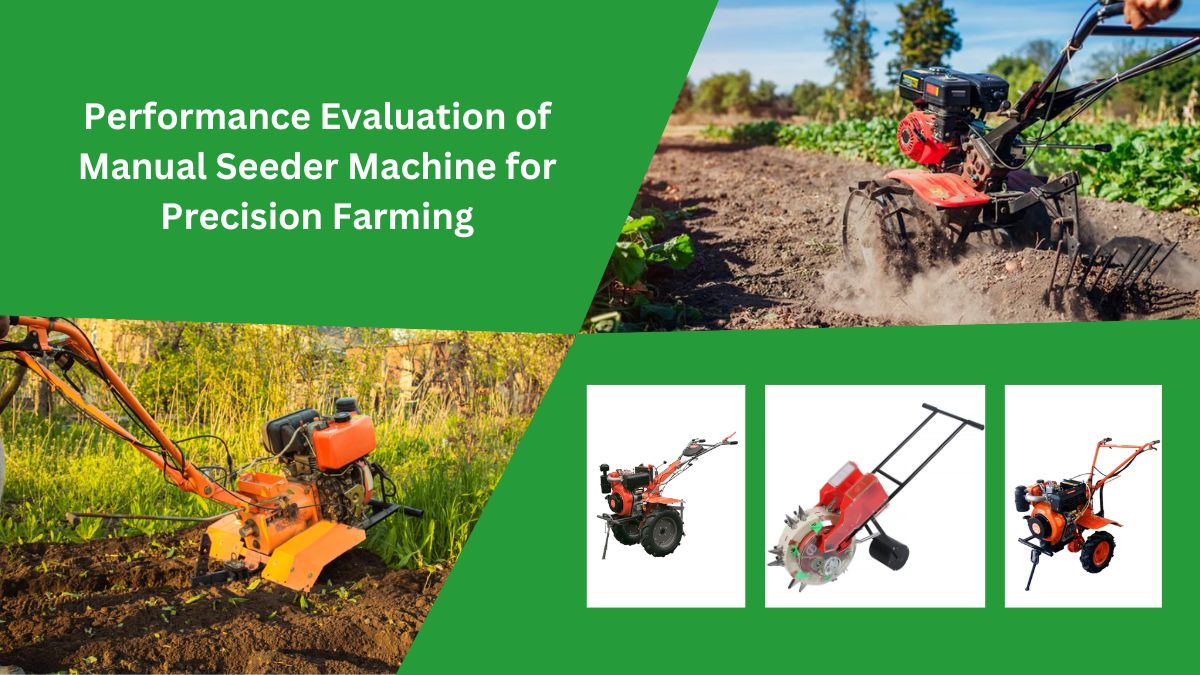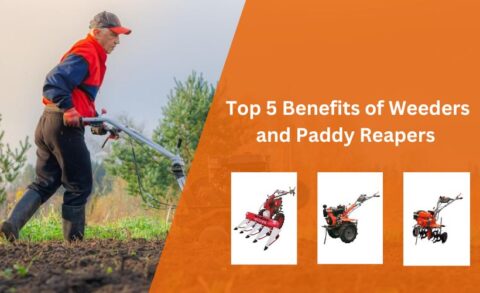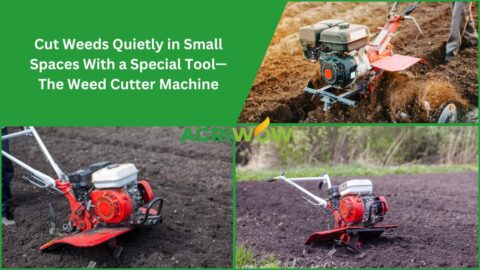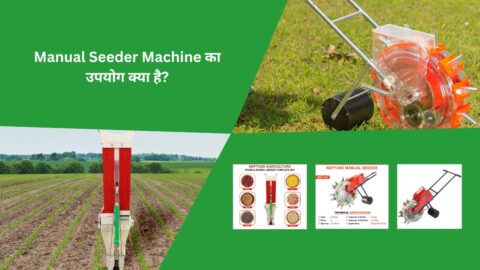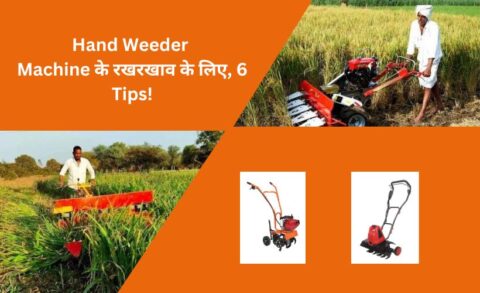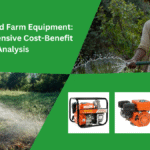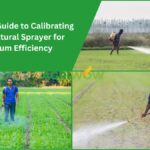For small-scale farmers, efficiency and cost-effectiveness are essential for sustainable agricultural practices. The right farming tools can dramatically reduce labor, increase yields, and ultimately improve profitability. This blog explores two vital equipment categories: manual seeder machine for precision planting and versatile power weeders/cutters. We’ll review the performance of seeder machines, affordable options available in the market, and the technical features of multipurpose weeders, providing small-scale farmers with clear, practical insights to make informed decisions.
Even at small landholdings, precision farming can significantly improve output by ensuring optimal seed placement, spacing, and depth. A manual seeder machine offers a cost-effective solution for achieving this precision, especially for farmers just beginning to mechanize their operations. Here are the key performance parameters to consider:
Seeding Uniformity
Uniform seed spacing and consistent planting depth are essential for optimal crop growth. A reliable manual seeder machine ensures even distribution within rows, reducing seed wastage and enhancing yield.
Seed Placement Accuracy
Placing seeds at the correct depth within the row is vital. Accurate placement directly impacts germination success and nutrient uptake. Deviations can lead to patchy crop stands.
Seed Damage Rate
An ideal seeder gently handles seeds, minimizing cracking or crushing that can inhibit germination. A low damage rate indicates a well-engineered machine suitable for delicate or costly seeds.
Field Capacity and Efficiency
Although manually operated, the seeder should allow efficient coverage—ideally spanning a reasonable area per hour. Features like easy refilling and smooth movement enhance field performance and reduce fatigue.
User Ergonomics and Comfort
Lightweight frames, balanced construction, and adjustable handles help reduce physical strain, especially during extended use.
Adaptability to Different Seed Sizes and Types
A versatile seeder should support multiple crop types—such as corn, beans, and various vegetables.
Durability and Maintenance
Sturdy construction is a must for long-term use in rugged farm conditions. Machines that are easy to clean and maintain tend to offer more consistent performance over time.
Farmers often evaluate these aspects through real-time trials under diverse soil and weather conditions, helping them choose a model that delivers reliability and effectiveness.
Low Price Seeder Machines for Small-Scale Farmers: Cost-Effective Solutions
For small-scale farmers with limited capital, affordability is a key factor when purchasing machinery. Thankfully, the market offers a range of low-price seeder machines that improve precision planting without heavy investment. Here are some economical options worth considering:
Push-Type Row Seeders
These are simple, affordable tools with a hopper, seed metering mechanism, and furrow opener. Ideal for single-row planting of crops like corn or beans, they offer a substantial upgrade from hand-sowing at a budget-friendly seeder machine price.
Multi-Row Manual Seeders
Still manually operated, these models plant 2–4 rows simultaneously, boosting field coverage. Adjustable row spacing and changeable seed plates increase flexibility across various crops.
Dibbler/Planter Sticks
Perfect for very small plots or nursery applications, these tools create uniform holes for seed placement.
Hand-Held Seeder Attachments
Farmers with small power tillers or garden tools can use compatible seeder attachments, allowing precise planting at a much lower seeder machine price than purchasing a standalone machine.
When exploring these cost-effective options, farmers should balance upfront cost with factors like planting accuracy, durability, and compatibility with local crops.
Technical Aspects of Multipurpose Power Weeder or Weed Cutter Machine
Weed control often consumes a major share of a farmer’s time and effort. A multipurpose agricultural power weeder, also known as a weed cutter machine, offers an efficient alternative to manual weeding, significantly enhancing farm productivity. Understanding their technical specifications helps farmers choose the right model:
Engine Type and Power
Most machines use single-cylinder petrol engines (2-stroke or 4-stroke). Engine capacity—ranging from 3 HP to 7 HP—determines how well the machine tackles dense weed patches and tough soil types.
Tilling/Weeding Mechanism
The heart of the weeder lies in its weeding system:
- Rotary Tines/Blades: These blades rotate to cut through soil and uproot weeds.
- Adjustable Tilling Depth: Allows the operator to change blade depth depending on the crop and weed density.
- Working Width: Refers to how much area the machine covers in one pass.
Transmission System
This component transfers engine power to the blades and wheels. While simpler models use direct drive, advanced versions offer multi-speed gearboxes with reverse options for better control and maneuverability.
Mobility and Traction
Rubber wheels offer ease of movement across uneven terrain. Balanced weight distribution ensures smooth operation and minimizes fatigue.
Attachments and Versatility
A multipurpose weeder becomes a versatile farm tool with the right add-ons:
- Weeding Blades
- Cultivator Tines
- Plows, Furrowers, and Ridgers
- Sprayer Pumps and Water Pump Attachments
Safety Features
Essential safety features include blade guards, anti-vibration handles, and emergency stop switches.
Ergonomics
Comfortable grips, adjustable handlebars, and intuitive controls make a big difference during extended use.
Choosing the right agricultural power weeder means aligning machine capabilities with farm size, crop type, and task requirements.
Conclusion
Adopting the right tools whether it’s a manual seeder machine or a reliable weed cutter machine can help small-scale farmers maximize their efficiency, reduce labor, and increase yields. In an age where sustainable, precision farming is more vital than ever, these innovations empower small farms to thrive and compete effectively.
FAQ
Q1. What are the main types of agricultural power weeders available?
Small-scale farmers commonly use three types of agricultural power weeder models:
- Walk-behind motorized weeders powered by petrol or diesel engines—ideal for medium-sized plots
- Handheld electric or battery-powered weeders, best suited for smaller gardens or eco-conscious setups
- Ride-on weeders, which are larger and more suitable for extensive farming.
Q2. How does a manual seeder machine improve planting consistency?
A manual seeder machine enhances planting accuracy by:
- Metering individual seeds at a consistent depth and spacing using adjustable plates or rollers
- Reducing seed damage and wastage compared to manual sowing
- Ensuring uniform emergence across rows, which improves overall yield.
Q3. What factors impact the seeder machine price and return on investment (ROI)?
Factors influencing seeder machine price include:
- Hopper capacity, build quality, and versatility (e.g., number of seed plates included)
- Whether it’s a single-row push-type or a more advanced multi-row model
Long-term ROI is determined by reduced seed wastage, labor savings, and improved crop uniformity, all of which can quickly offset the initial investment.

